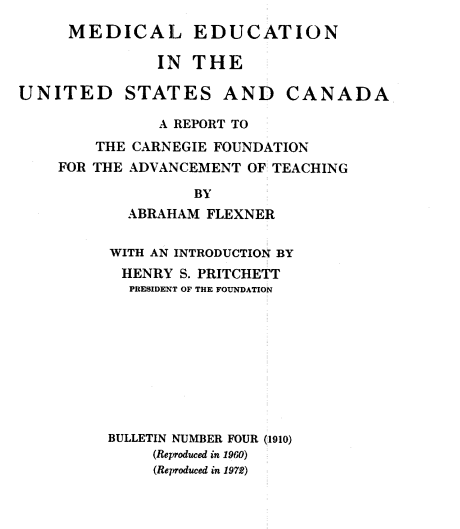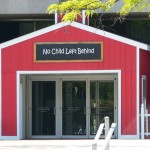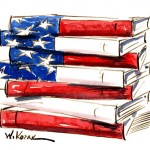In 1910 William Howard Taft was president of 46 states. Thomas Edison demonstrated talking movies. Mark Twain and O. Henry died. Mother Theresa and Dizzy Dean were born. So was my father, August Merz, Jr.
And The Carnegie Foundation for the Advancement of Teaching published Medical Education In the United States And Canada by Abraham Flexner, with an introduction by foundation president Henry S. Pritchett.
Flexner and Pritchett could hardly have known how relevent their 1910 report would be to teachers in 2014.
See for yourself by substituting “teacher” for “physician” in this quote and throughout this post.
Pritchett wrote, “As a rule Americans, when they avail themselves to the services of a physician, make only the slightest inquiry as to what his previous training and preparation have been.”
This quote may well come up in a seminal encounter this week when19 National Board Certified Teachers meet on Capital Hill with members of Congress who are Board-Certified physicians. They will discuss parallels between the professions.
Jodi Moskowitz, a participant, provides a link to Flexner report and writes about the upcoming meeting in her recent post, The Medical Model, What Can Educators Learn From It? The piece is worth quoting at length:
What can we as educators learn from all this? EVERYTHING! By streamlining education preparation programs, we can better prepare future teachers. Once teachers complete university programs and student teaching, they need residency schools – much like doctors enter residency hospitals. Consider what your first year of teaching was like. Most of us had informal mentoring programs at best; this is causing a huge teacher-turn-over rate. In residency schools first-year teachers can be mentored by the most accomplished of teachers who will already work there. By valuing these accomplished teachers and teacher leaders, we can elevate our profession to just that – a true profession.
She concludes by saying the meeting is a starting point and asks where it will go from there. I hope it leads in two directions.
First, I hope teachers and doctors will someday soon discuss issues encompassed in these quotes from the Flexner Report:
[Medical] Educational institutions … are peculiarly sensitive to outside criticism and particularly to any statement of the circumstances of their own conduct or equipment, which seems to them unfavorable in the comparison with that of other institutions.
And:
The fundamental sciences upon which medicine depends been greatly extended.
And:
The quality of the training varied with large limits with the capacity and conscientiousness of the master.
Second, I hope that teachers will organize similar meetings with engineers and lawyers to discuss the parallels we have with those professions, too.
But first, let’s see what comes from next week’s meeting.










Comments 1
Well said, Sandy. The university “school” model has been an obvious need for a long time. The Center for Teacher Development that we have in PVUSD is a variation on this theme, but I believe we need to look more closely at figuring out a model that could be scaled when proven successful!